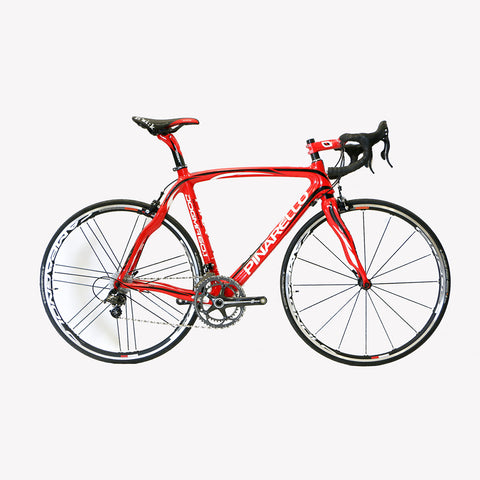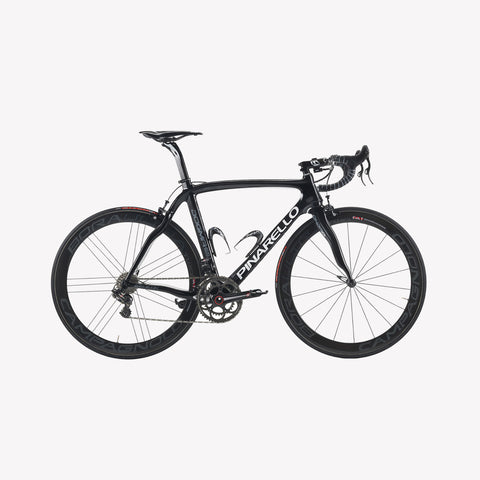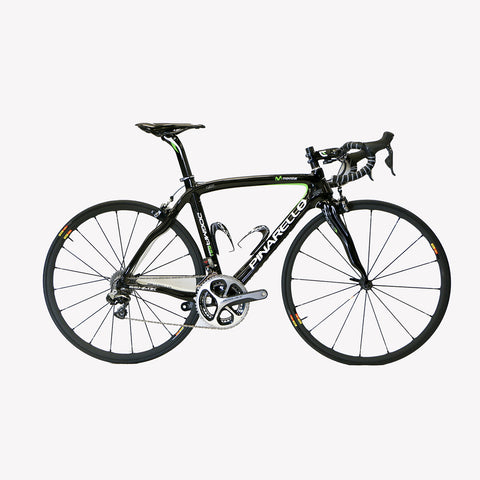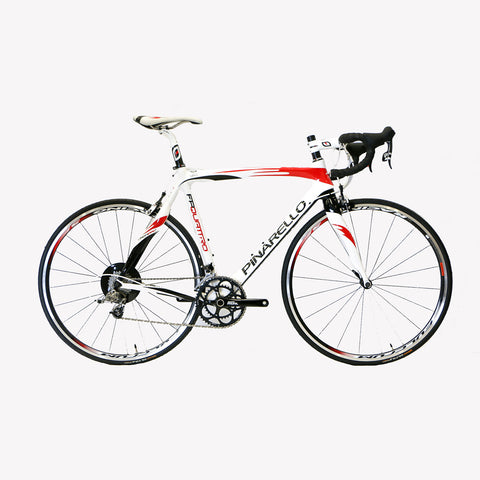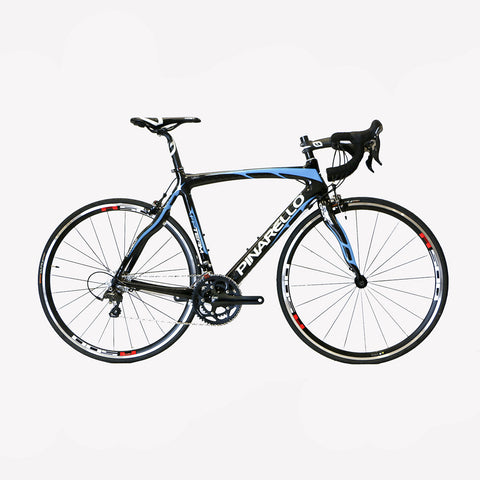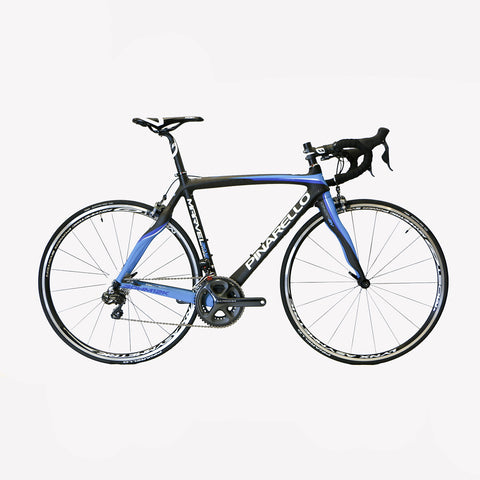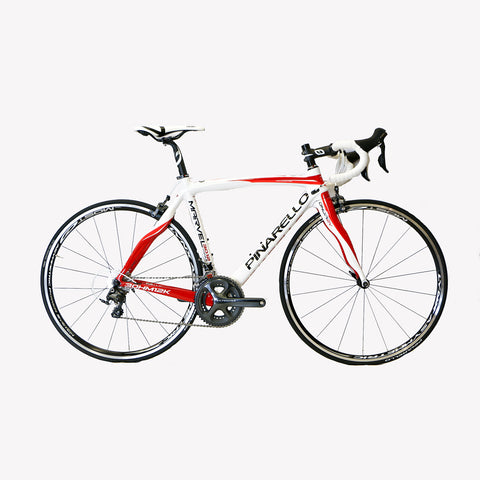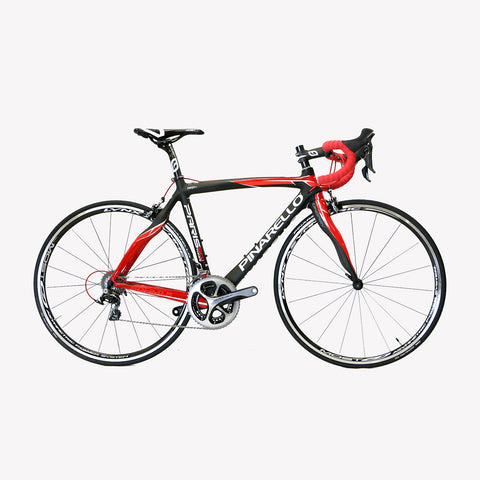PINARELLO DOGMA F8 FRAME SET
Conceptualising the 8th edition of Pinarello's revered Dogma platform originated last summer, at that time when the Italian brand's proven Dogma 65.1 was in the process of claiming yet another victory at le Tour under Team Sky's command. It was there that two of the UK squad's top sponsors agreed to partner on the bold endeavour, a project set to shatter the standards previously set by the multiple tour-winning 65.1.
Yes, we're talking about the supercar engineering team at Jaguar joining forces with Pinarello for the development of the all-new Dogma F8 — a complete ground-up redesign of what many called perfect. And in true Pinarello fashion, testing results of the recently released frame speak for themselves. Sharing the 65.1's finely tuned geometry, the machine's refined design, courtesy of material upgrades and fresh tube shapes, yields a race bike that lays claim to a 47% improvement in aerodynamics, a 16% more balanced feel, a 12% increase in rigidity, all while shaving 120 grams over the previous version in the process. Welcome to the future of asymmetric engineering.
Sticking with its proven ally in composite development, Pinarello again relied on Japanese carbon fiber supplier Toray for the F8's build. While the 65.1's 65-ton 65HM1K Nano-alloy Carbon Fiber was a carbon more rigid and reactive than anything Pinarello had previously used, Toray had an exclusive new material for the F8: Torayca T1100 1K Dream Carbon with Nano-alloy technology. While the name is certainly impressive, its application is even more so. T1100 is the current go-to outer skin for many modern aircrafts, and its stiffness-to-weight ratio is nothing short of stunning. Compared to a 940-gram, size 54cm Dogma 65.1 built with Toray's 65HM1K, the same frame built with T1100K weighs nearly 80 grams less, while retaining the same structural characteristics. But weight, of course, is only a slice of the Dogma F8 equation, as we all know tube shape application also plays a vital role in the bike's handling and overall efficiency.
Starting at the front of the frame, Pinarello applied its new Onda F8 fork, which, at 360 grams is 10% (40g) lighter and reduces fork drag by roughly 40% compared to the previous Onda 2. The new fork has been derived from that of Pinarello's TT-specific Bolide, wearing an optimized surface profile that works with airflow from the front wheel. The blades wear a somewhat "bowed" or convex stance, which Jaguar's engineers say is the sweet spot where air stays attached — reducing the size of the wake — without creating too large a frontal zone.
Moving to the frame, Jaguar's engineering expertise came into play through the use of CFD (Computational Fluid Dynamics), as well as using Pinarello's existing 65.1 Dogma as a baseline, in which more than 70 frame configurations and 300 CFD analysis cycles yielded the most aerodynamically efficient frame possible. Integral to these analyses was the implementation of Pinarello's new tube shaping, dubbed FlatBack. A cross-section view of this shape reveals an ovalized frontal section paired with a rather truncated back half, which was done to create a vacuum that eliminates turbulence. So while a true aerodynamic tube profile wears a non-UCI-legal 8:1 ratio, Pinarello applied the maximum 3:1 allowable ratio to the front half, without the drag-inducing ovalized rear half. The result is a tube profile that contributes to the frame's overall increase in aerodynamic efficiency, while maintaining the rigidity and ride quality of its predecessor.
You'll undoubtedly notice the seamless integration of the fork with the tapered 1 1/8 to 1 1/2in streamlined head tube and oversized FlatBack down tube. At the bottom bracket junction, Pinarello stuck with its proven Italian-threaded BB, a design choice it stands by for both reliability and overall rigidity. The F8's asymmetric chainstays are paired with the new Onda RS F8 seatstays, which are positioned low — meeting the seat tube farther down — and wear a more concave shape in comparison to the previous 65.1's stays. This lower design hides the rear brake cluster, along with the new TwinForce integrated seatpost clamp, thus improving the airflow past this rear section of the bike. Additionally, the extensive CFD testing revealed that by lowering the seat tube water bottle mounts, less drag resulted. Because of this, Pinarello incorporated three holes on the seat tube for two bottle mounting positions.
Pinarello's asymmetric design philosophy is ever-present in the Dogma F8, as its engineers again restudied the forces in action as a rider sprints on the pedals, pulls on the handlebars, and muscles the bike through corners. FEA (Finite Element Analysis) confirmed that the 65.1 Dogma's asymmetrical design was beneficial in leveling the variances in frame deflection from one side to the other, which is why the F8's tubes have been arranged in a similar, albeit more asymmetric (16% more), layup to better balance drive-side forces.
As with the 65.1, carefully engineered internal cable routing on the new F8 allows for you to easily choose between either mechanical or electronic shifting systems, without any penalty to the bike's aesthetic or its aerodynamic profile. The F8 features interchangeable cable stops at the frame openings that are capable of being intuitively swapped out should you select different drivetrains throughout the life of the frame. Along these lines, the carbon Air8 seatpost accepts both Shimano Di2 and Campagnolo EPS battery packs, but you'll need the mounting hardware, sold separately.
The Pinarello Dogma F8 Frameset is available in 13 sizes from 42 to 62cm. It comes in the colours 950 Naked Red, 951 Naked Silver, 952 Carbon Red, 953 Black Yellow Fluo, 954 White Carbon Red, 956 Red, and 958 Team Sky.


